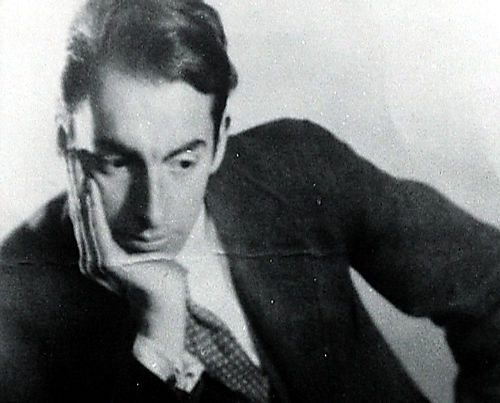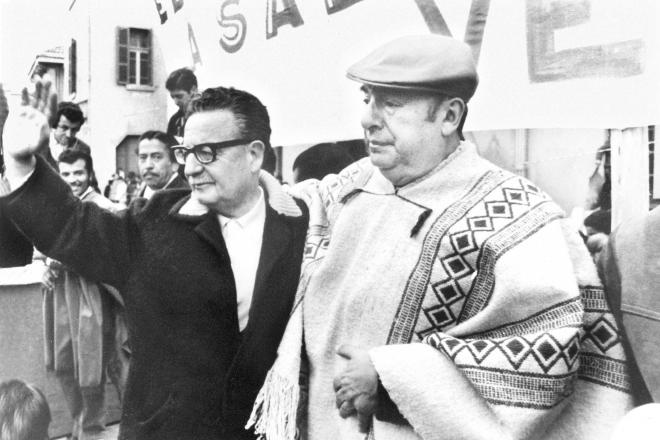Was Pablo Neruda Murdered?


In October 2017, a group of international forensic investigators concluded that the official version of Pablo Neruda’s death from advanced prostate cancer is incorrect. However, the Chilean government has exhibited reticence in collaborating with the investigation that seeks to determine whether Neruda was, in fact, assassinated by the dictatorship of Augusto Pinochet, as claimed by the poet’s chauffeur, Manuel Araya.
Since Araya’s testimony in 2011, in which he stated that a doctor working at the Clinica Santa Maria injected Neruda with a toxic substance, there has been a divide between state and testimony that is reminiscent of the covering up of dictatorship crimes and human rights violations. In 2012, a book by investigative journalist and author Francesco Marin documented Araya’s testimony, juxtaposed against documents and expert forensic opinion which concurred with the later scientifically proven evidence.
Owing to his involvement in the Communist Party and political proximity to President Salvador Allende, Neruda would have loomed as a threat to the dictatorship. His alleged assassination happened just a day before Neruda was due to go into exile in Mexico. In the interim period, while arrangements were being made for his departure, Neruda, his wife Matilde, as well as Araya, were transferred to the Clinica Santa Maria.
In preparation for exile, Neruda had asked Matilde and Araya to fetch some belongings from his house known as La Isla Negra. It was during this time, it’s alleged, when Neruda was alone, that an unidentified doctor – possibly a DINA agent – injected Neruda with a substance in his stomach. Araya stated he saw a red mark on Neruda’s abdomen. That was the last time Araya saw Neruda – having been lured away on the pretext of buying medicine not available at the clinic, Araya was ambushed by dictatorship agents and taken to the Estadio Nacional to be tortured.
The first tests on Neruda’s exhumed remains were carried out in Chile, with Servicio Medico Legal (SML) insisting that there was no evidence to suggest that the poet might have met with foul play at the clinic. The Chilean state’s narrative was upheld for a few more years, until an international forensics team declared otherwise. Since then, the Chilean government has been prolonging the final phase of the investigation, which seeks to examine the earth samples taken from Neruda’s burial place to determine if the botolinum discovered in the poet’s molar tooth was an external contamination from the ground or specifically present in his body. The latter would vindicate Araya’s testimony and Neruda’s death, as many indeed suspect, would be added to the list of dictatorship-era assassinations.
In this case, the state is obstructing Chilean justice. Former President Michelle Bachelet had allocated funds for the investigation in 2015 which were transferred to the Ministry of Justice to pay for the forensic investigations carried out abroad. Right-wing President Sebastian Pinera has failed to issue the payments, thus halting the necessary investigations to proceed with the case.
Chile currently owes nearly $40,000 to laboratories in Canada and Denmark for previous investigations. Meanwhile, SML informed Judge Carroza that it is not in possession of the samples requires for further testing.


Thus far, the investigations have established that the state has played a role in falsifying Neruda’s death certificate. While the final verdict regarding Neruda’s possible assassination still need to be forensically proved, it is also pertinent to trace the Chilean state’s preparation for the falsification of Neruda’s death.
Neruda died, possibly murdered, on 23 September 1973, just 12 days after after a US-backed coup toppled Salvador Allende’s socialist government. A curious detail, relevant to the current investigations into the possibility that Neruda was assassinated, was a statement prepared by Chilean dictator Augusto Pinochet in the very early days of torturing, killing and disappearing his opponents. In his book, El Doble Asesinato de Neruda, Marin writes that the dictatorship and its press were preparing the public for Neruda’s impending death. While newspapers were running updates about Neruda’s allegedly fast deteriorating health, Pinochet broadcasted a statement on radio: “Neruda is not dead. He is alive and free to travel wherever he likes, as befits other people of old age and struck with infirmity. We do not kill anyone and, if Neruda dies, it will be of natural causes.”
On September 23, the Chilean newspaper El Mercurio issued its final update about Neruda’s health, on the same day its alleged the poet was injected with a substance in his abdomen and later died.
In 2013, Dr Sergio Draper, who assisted Neruda during his stay at the Clinica Santa Maria, alleged that a doctor by the alias of Dr Price, was with Neruda at the time of his death and the person who injected him with a toxic substance. No records have established the existence of Dr Price, while Draper’s descriptions match former CIA and DINA agent Michael Townley, who was responsible, together with Eduardo Berrios, for the manufacturing of chemical weapons – including sarin gas – to use against Chile’s political prisoners.
Following the 2017 forensic results, lawyer Eduardo Contreras, who represents the Chilean Communist Party in the Neruda case, requested court proceedings against Dr Draper for illicit association and homicide by omission. In his request, Contreras pointed out that Draper was working in a military hospital and had links to the Chilean Armed Forces complicit in the coup. He also accused Draper of “inventing” Dr Price and asserted that the doctors involved in Neruda’s possible murder were the same involved in the assassination of former Chilean president Eduardo Frei Montalva. Frei was poisoned by CNI agents at the Clinica Santa Maria during his recovery from a hernia operation, in 1982.
Meanwhile, the Neruda Foundation has remained averse to challenging the Chilean state’s official version of Neruda’s death. The Foundation had appointed Ricardo Claro as director, who had links to Pinochet and was one of DINA’s financiers. Neruda’s wife, Matilde, had appointed lawyer Juan Agustin Figueroa – also a friend of Claro – to manage the legal details of Neruda’s estate. More than $2 million dollars from the foundation were transferred to Cristalerias Chile – one of Claro’s companies and which Figueroa became director of, after Claro’s death.
Araya was a lone voice amid a web of complicity which has now seen its most visible premise shattered by the investigations determining that Neruda did not die of metastatic prostate cancer. Why is the Chilean government reluctant to allow the investigations to proceed? If it is discovered that Neruda was indeed poisoned, the Chilean state has a lot to answer for. Since the transition to democracy, memory groups in Chile have adamantly stated that Pinochet’s calls for oblivion have been rigorously upheld across the political spectrum. Uncovering the truth behind the torture, murder and disappearances of dictatorship opponents is an ongoing process largely due to the Chilean military’s pact of silence, and the refusal of governments to contest this deprivation of Chilean collective memory. It is why Chile is often described as a country where the tortured and the torturers live in close proximity –the former scarred and the latter cloaked in impunity.
Having confirmation that Neruda was indeed assassinated will likely put pressure on Pinera, and subsequent governments to make dictatorship secrecy accessible. The outcome can go both ways but as things stand, a weak government caving in to the military, even if Neruda was murdered, will likely reinforce the divisions in a country that operates like an extension of the Pinochet dictatorship.

A pity someone doesn’t investigate some ‘convenient’ deaths in this country!! Too controversial, I assume.
http://www.greanvillepost.com/2016/10/03/encyclopedia-of-domestic-assassinations/ Fran, this may be of assistance.
A Gaelic version of Neruda’s ‘El Retrato en la roca’ —
PORTRAID SA CHREIG
Bha mi gu math eòlach air. Bha mi còmhla ris
fad bhliadhnachan; le òr-shusbaint creagach.
Duine sgìth a bh’ ann. Dh’fhàg e
ann am Paragua athair ’s a mhàthair,
a phàistean, mic a bhràthar ’s a pheathar,
a chuid chàirdean-cèile as ùire,
a dhachaigh, a chearcan,
agus corra leabhar leth-fhosgailte.
Chaidh a ghairm leò dhan doras.
Air dha fhosgladh, ghlac am poileas e.
Thug iad a leithid a shlacainn dha
’s gun do thilg e smugaid-fala sa Fhraing, san Danmhairg,
san Spàinn, san Eadailt, gu falbhanach.
Agus mar sin chaochail e, ’s chan fhaca mi tuilleadh aodann,
cha chuala mi tuilleadh a shàmhchair dhomhain.
Gus an àm a bha seo, air oidhche nan seachd sian,
’s an sneachd a’ fighe
trusgain fhìorghlan dhe na beanntan,
air mun eich, fad às,
thug mi sùil agus siod mo chàraid.
Bha aodann mar chloich,
a bhathais a’ toirt dùlain dhan droch shìde,
a’ ghaoth na shròn a’ mùchadh
donnalaich duine fo gheur-leanmhainn:
sin far na leig an dìobarach a sgìos:
a’ mairsinn na thìr fhìn air dhol na chlach.
EL RETRATO EN LA ROCA
(Pablo Neruda)
Yo sí lo conocí, viví los años
con él, con su substancia de oro y piedra,
era un hombre cansado:
dejó en el Paraguay su padre y madre,
sus hijos, sus sobrinos,
sus últimos cuñados,
su puerta, sus gallinas,
y algunos libros entreabiertos.
Llamaron a la puerta.
Cuando abrió lo sacó la policía,
y lo apalearon tanto
que escupió sangre en Francia, en Dinamarca,
en España, en Italia, trajinando,
y así murió y dejé de ver su cara,
dejé de oír su hondísimo silencio,
cuando una vez, de noche con chubasco,
con nieve que tejía
el traje puro de la cordillera,
a caballo, allá lejos,
miré y allí estaba mi amigo:
de piedra era su rostro,
su perfil desafiaba la intemperie,
en su nariz quebraba el viento
un largo aullido de hombre perseguido:
allí vino a parar el desterrado:
vive en su patria convertido en piedra.
I want to thank Ramona Wadi for this article. I think Neruda went the way of his great friend Lorca – killed by fascists. There is a similar mystery surrounding the apparent suicide of Walter Benjamin as he fled from the Gestapo. Authoritarian governments of all shades and hues murder poets. The full tragedy of the Pinochet regime has yet to be revealed, but will be if there is any justice left in this world.